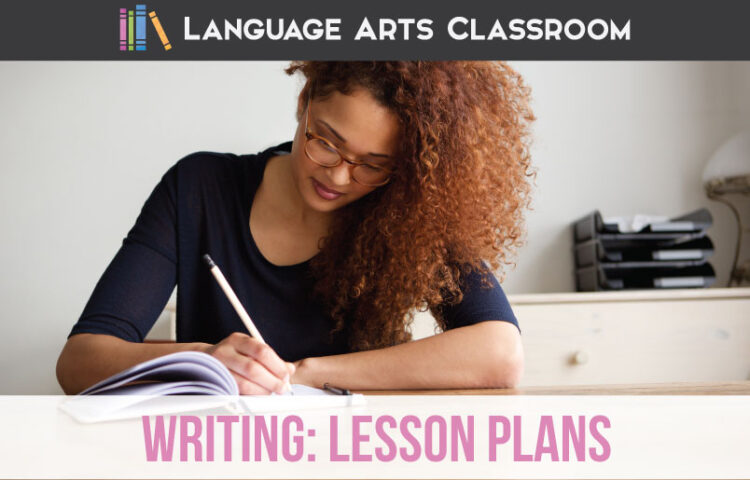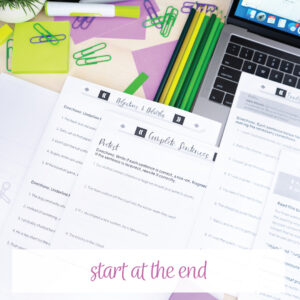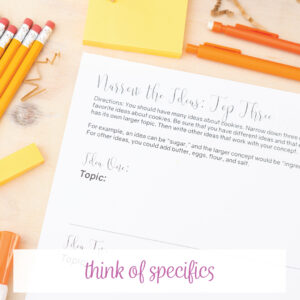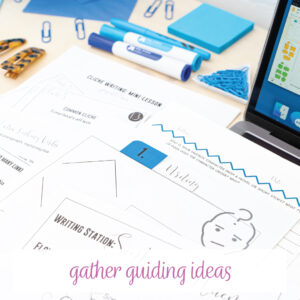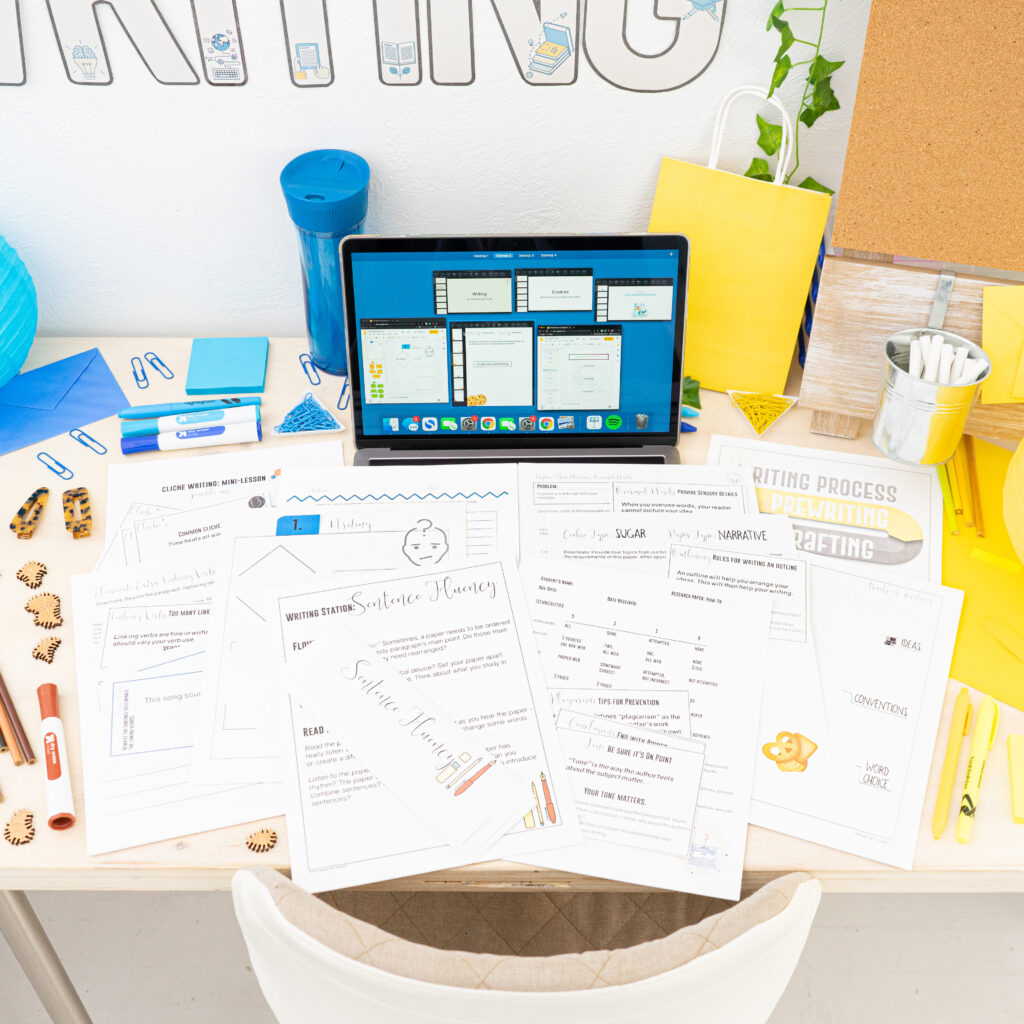Teaching English language arts means writing writing lesson plans.
(I’m sorry for that play on words.) Writing lesson plans should work toward the standards, but they should also not overwhelm students. Creating writing lessons is a balance, and honestly, teaching writing requires a constant state of reflection for me.
Teachers are aware that college professors and employers bemoan the lack of writing skills shown in today’s youth. Additionally, standards provides high expectations for student writing. With technology, clear communication is essential. I GET that we teachers are stressed about creating writing lesson plans.
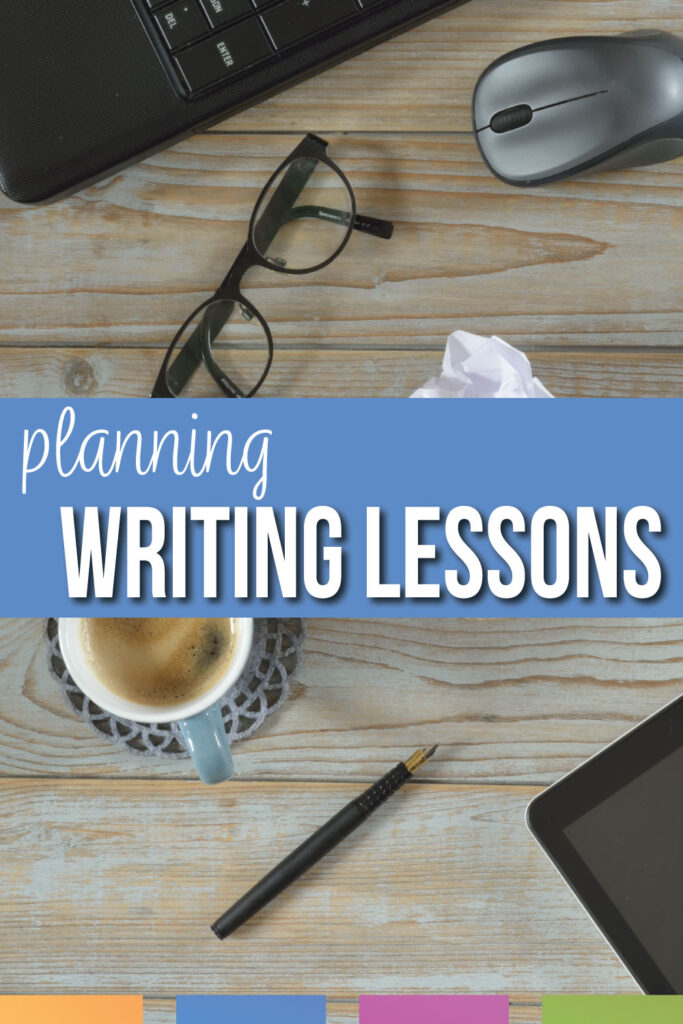
So, ok. We have all of the whys and reasons for teaching writing. . . not that we wouldn’t have taught it anyway. Teachers will craft writing lesson plans, keeping all of this in mind. If you are in a rut with student writing assignments, here are different angles to consider for lesson planning.
Start at the end
Starting with the ending is my common approach. What is the goal of this writing unit? What writing standards am I working toward? Possibilities include (and this is not an exhaustive list):
- writing strong introductions and conclusions, perhaps ones that tie together.
- incorporating ethos, pathos, and logos.
- creating stronger sentences.
- writing a strong thesis.
- making purposeful transitions.
- neatly incorporating research.
- following conventions and other grammatical rules.
What should students know by the end? What piece will help them create better writing? Dependent on what grade I am teaching, the standards could ask me to look at parallelism, variety in sentence structure, or balanced arguments.
Choose your standards and objectives, rather than a general, “students will write a research paper following best practices.” That objective could work for the larger picture, but making very specific objectives helps me focus and decide smaller assignments.
Plus, after I work with a class on smaller writing assignments, I can envision what they should accomplish from larger writing assignments.
Think of specifics
Regarding assignments, another angle for writing lesson plans is to gather the activities and graphic organizers for a particular writing assignment. Narrative, informative, and argumentative papers require different tones, claims, and evidence. In a narrative assignment, you probably will concern yourself with dialogue. In an argumentative paper, you’ll work on counterclaims.
So, think of specifics. How will students brainstorm? How will you assign and introduce the assignment? What tools will help students edit their writing? Can you change-up regular activities, making them specific to writing? Considering the activities before drafting writing lesson plans will give you a larger picture and will help you tweak the activities as the unit continues. (All of those links are for writing posts on my blog—those posts will provide more ideas for writing lesson plans.)
As I think of specifics, I also think of what specific activities will help my students. We might work in groups to build community or organize papers. Another time, we might share troublesome areas of a paper and model working on them together. When I think of specific areas where students need help, then I can create writing activities.
Gather guiding ideas
After teaching a writing unit a few times, you’ll have a general idea of planning. If you are building writing lesson plans for the first time, take a look at another teacher’s long-term plans. (That’s a free download.)
Another thought is to use your standards as the guideline or influence. You may need to back up and to look at your daily lesson plans. Can you tie a reading assignment to writing? Will students develop greater meaning from literature if they analyze a concept through writing? If students approach reading with a writing approach, other pieces can click for them. If you have freedom in assigning student papers, making the paper connect to another area of learning may engage students more.
Finally, you can approach writing lesson plans with a student specific, highly individualistic approach. Maybe Sam needs to work on writing complete sentences, but Beth never writes fragments. Beth, however, needs to use vivid words. Ask students to create goal sheets for their assignments. Sam should pay extra attention to his sentences, while Beth should focus on her word choice. Don’t ignore the rest of the writing rubric, but give students ownership in the assignment by creating their own goals.
Writing lesson plans is a part of ELA life. They can become mundane, simply walking students through the motions. Instead, approach lesson plans with varying ideas. Students will appreciate the effort, becoming better writers.

